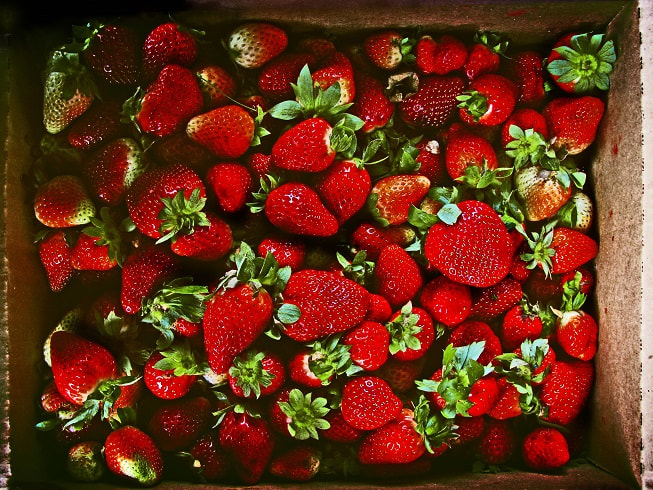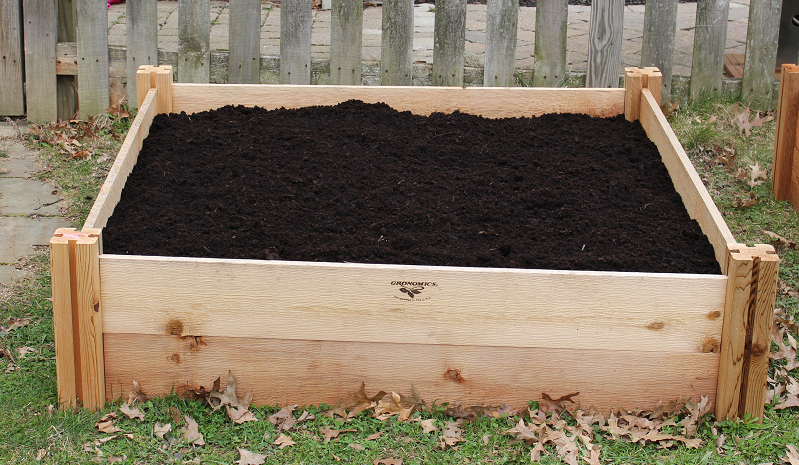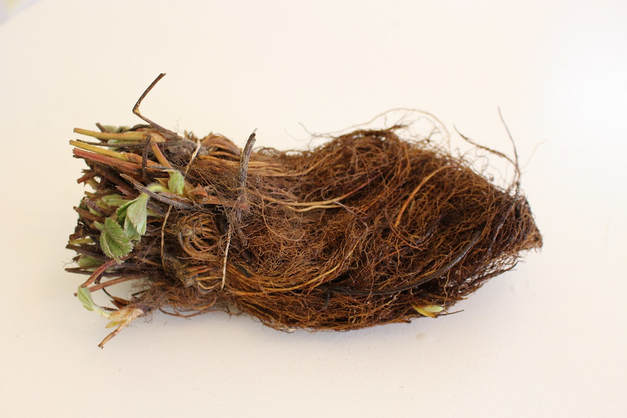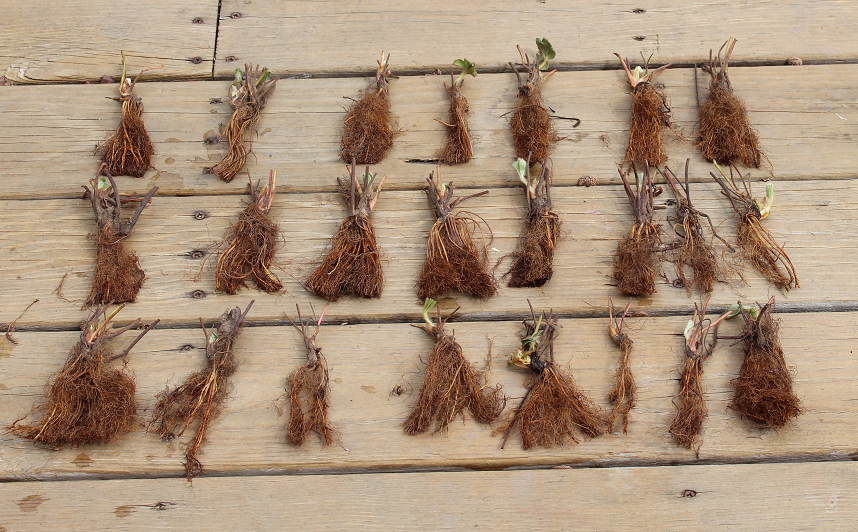I’m going to show you how to grow the best fresh garden strawberries in your backyard so that you can pick sweet produce all season long. 1. Find a Sunny SpotIt’s no secret that strawberry plants like sunshine, so your first step in planting a strawberry patch should be to identify potential areas around your property where the sun shines for 6-10 hours a day. This should be pretty easy to determine. I have a 3 in 1 soil, pH and sunlight analyzer that I bought last year, but I also walked around my property and took photographs of the land at different times of the day, to get a good feel of what spots were sunny at what times of the day. We have a giant pin oak tree that casts shadows across the backyard, so this was a helpful way for me to understand the optimal spots for planting full sun crops while at the same time accounting for my current landscape limitations. 2. Choose How to PlantMost types of strawberries are versatile in that they do well both in the ground, can be planted in containers, hanging baskets, or in a raised garden bed. I’ve tried all of these methods, and there are pros and cons to each. Strawberries do well in containers; however, as with any container garden, you must remember to water regularly and never let the plants dry out. As there’s only limited soil available for the plants, if you forget to water, it could mean certain death for your strawberries. I also find with container gardening that it makes it harder to protect your produce from critters. Covering each container with netting to me detracts from the beauty of container gardening, and so I’ve saved my pots for herbs and flowers. Similarly, hanging baskets also need careful watering and fertilizing, and are at the perfect height for birds and squirrels. Most farmers plant their strawberry crops straight in the ground, which is a viable option if you have soft, tilled soil ready for planting. For a backyard, unless you prepare the soil before planting, you might not get the harvest you want. Many homeowners and renters aren’t sure what kind of dirt they are working with, whether the ground is safe to grow edibles, and might not want the trouble of double-digging the earth and soil testing just to get started. For those who are looking for a fool-proof answer, a raised garden bed will be a good option. I’m going to plant strawberries in a raised garden bed this year. Raised garden beds have an advantage in cold weather climates because the soil heats up quicker than the ground. Additionally, if you are planting where grass currently grows, the soil on most lawns is compacted to a point where roots have time digging through. With a raised garden bed, you can bring your topsoil/compost in, ensuring that plants have a mix of optimum nutrients for growing and the loose earth makes it easy for growing roots to expand. 3. Build your strawberry patch Now that you’ve found a sunny location for your strawberry garden put together your raised garden bed kit and fill it with a mix of topsoil and compost. Yes, it’s that easy! I found that nine 40lb. bags filled a 4x4x10 raised garden frame. Strawberry roots don’t go down into the soil very deep, so you might opt for a raised garden bed that’s not that high, but I chose to go with this frame for a few reasons. Tips on choosing a raised garden bed kit:
If you want to build a bed but don’t have the budget for the frame above, don’t go with a cheaper model. I did a lot of research before settling on that one. There are lots of frames that at first glance have the same specifications, but what you don’t realize is they go cheap on either wood quality, or width, or production. Reviews of the less expensive beds include problems like:
Take my advice and go with something that will last, like the Gronomics bed below: 4. Order Strawberry PlantsNow that you’ve got your raised garden bed set up, it’s time to roll up your sleeves and get digging! I ordered my strawberries from a nursery online, so they’d come in the mail at the right planting time. I have a hard time finding strawberries locally this early in the year. Shipped plants arrive bare root and dormant and they look like this: You’ll likely find more success and save a lot of money if you plant these dormant, bare root strawberries than if you wait until fully blooming strawberries appear at your local nursery. I ordered 25 Albion strawberry plants, which should supply a family of three with produce all summer long. What kind of strawberries should I buy? Lots of gardeners wonder what types of strawberries they should grow in their garden. There’s no right answer for this, but your local universities should be able to provide resources. The Ohio State University Extension offers tips on everbearing, day-neutral and June-bearing cultivars, the pros and cons of each and a guide for planting. I chose to go with the everbearing variety of Albion strawberries because I hope to get strawberries in the first season of growing, whereas if I had gone with a June bearing variety, I couldn’t expect a harvest this summer. Another benefit of everbearing strawberries is that they’ll produce strawberries at least two times during the growing season, usually in the first part of summer and then again in the fall. Fruit bearing in the first season is rewarding for novice gardeners. Everbearing strawberries are also a smart choice for raised garden beds as they don’t produce a lot of runners and take over the garden. The instructions that came with my strawberry plants directed me to soak the roots for a few hours and then cut the roots to a three-inch length before planting. Once I did that, the plants were ready for the garden. Trowel in holes spaced equally apart in the garden bed lightly spread roots apart and lower the strawberry plants into the ground. Cover over the roots with the loose soil using a trowel or your hands, and gently pat down the earth around the plant to stabilize it. Be sure to keep the crown of the plant (the big central green mass above the roots) above the soil level and do not bury it. Water, and cover at night with row covers until the last chance of frost is over. For Lakewood, OH that is predicted to be April 22, but I’ve seen that date vary each year by a week or two so keep an eye on the weather forecast and when in doubt, cover the plants at night. Check out frost date predictions for your area to help guide your frost cover practices. 5. Consider Companion PlantsOrganic gardening is a big priority for me, and it should be for all of us who care about growing things. The volume of pesticides used by industrial agriculture and the destruction of habitat has turned farmland into deserts barren of wildlife. Humans are contributing to climate change because of our increased consumption of natural resources. We know we must move towards a more sustainable model. So what does that mean for your strawberry patch? It means that there are often easy, pesticide-free ways to grow better produce, attract beneficial insects to your yard and increase yields. This can be done in a variety of ways, and one of the time-tested methods I’ll explain here is interplanting strawberries with herbs, flowers, and other companion plants. Companion Plants
I’ve got some extra marigolds from a bed nearby that I’ll add to my strawberry bed, and I’m also going to grow borage, also known as starflower, from seed. Borage is an edible flower that can be used in salads and has lots of culinary uses. Farmer Lee Jones, founder of The Chef’s Garden in Huron, Ohio, actually sells fresh borage to local restaurants and has a great blog about its uses. I’ve got spinach and bush beans going into a raised garden bed nearby, as well as some nasturtium. So it’s not essential (or even realistic, space-wise) to put all the companion plants on this list in one bed, but pick one or two that will be exciting to grow, and you can simultaneously attract pollinators to your garden bed, while at the same time repel unwanted insects and kill nematodes. 6. Growth and MaintenanceWatering: Strawberry plants require 1 inch to 1.5 inches of water per week in the hot summer months. I’ve bought a simple raised garden bed irrigation system which I’ll set up soon, so more on that later. For now, make sure you get enough regular water to the strawberries that help them thrive, but don’t make the dirt constantly soggy, that’s too much water. Fertilizer and Mulching: Strawberries like a little acid so if you have a pine tree in your area you can use the needles as a type of mulch in between the strawberries to keep the weeds from sprouting. Fertilize established plants in early summer, and again in early fall, with blood meal and bone meal. Pest control: You’ve already done half the work here! Don’t plant strawberries in a bed where you’ve grown potatoes, eggplants, peppers or tomatoes in the last few years. Plant companion plants that repel insects and kill nematodes. Cover the bed with netting to avoid birds, squirrels, and other critters from taking your berries. It’s that easy. Visit your local nursery if you have a specific problem. I find that nursery owners have a wealth of information and are happy to share information with budding gardeners. 7. Enjoy Your StrawberriesPick the berries as they ripen, rinse and eat fresh. Strawberry picking is a family affair, and kids get joy from harvesting and eating them. Invite friends and family over to enjoy the harvest with you. Here are some recipes that I plan to try this summer for summer parties. I’ll update you if they turn out well. Strawberry Recipes:
Visit a strawberry festival: The 2018 Troy Strawberry Festival in Troy, Ohio will be held on June 2nd and 3rd. This year’s theme is Strawberry Palooza. I’ve never been to this, so I am adding it to my calendar. It looks amazing! Good luck planting and harvesting your strawberries this year. I’d love to hear from you on how it goes and any additional tips you might want to share. And please subscribe to the blog to stay up to date on these and other Wildflower Lab adventures. Comments are closed.
|
About UsThis is a blog about turning lawns into edible gardens, providing a habitat for pollinators and living a more sustainable life. We hope to inspire others to plant a garden to save the world. CategoriesArchives
September 2018
© Copyright 2018 Wildflower Lab
|





